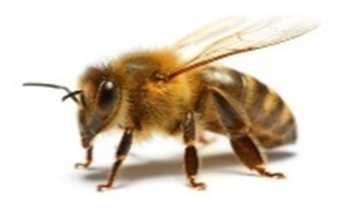
All meetings on Saturdays, 1:30 p.m. at the OSU Extension office, 1211 SE Bay Blvd, Newport, OR
November 16: Last Meeting of 2024!
This month’s gathering will be the annual meeting to elect officers and brainstorm plans for next year (especially the speaker program) – your ideas make our club stronger.
Bring a Taste of Honey, if you like!
See our newsletter for the updated calendar and schedule or our full list of presenters and topics for 2024.
PRESIDENT’S MESSAGE
By Jeremy Egolf
Anticipation, responsiveness, proactive adaptation, learning, repeat… So, we’re dealing with the devil we know, and preparing for the one we don’t. At my place, besides adding feeders this past week, we’ll be hitting the colonies with oxalic acid at the end of the week and checking the store room for spring Varroa treatments to apply around early April or so when the alder pollen appears. As for the devil we don’t know, the bee keeping industry is girding up for the tropilaelops mite by education the community and, I suppose, the researchers are putting in their grant proposals, or should be. In this issue, we provide a sampling of the Tropi publicity that is appearing around the US.
Speaking about learning, a friend recently had a robust colony collapse to a couple hundred bees for no obvious reason, and then to nothing, followed in short order, by a second more modest but nevertheless healthy appearing hive. No deformed wing virus or similar, but possibly a less obvious disease (and not foulbrood or the other usual visible suspects). Lesson learned for me is that the right response to an undersized colony going into winter is not to automatically combine it with a stronger neighbor but to give good thought to the reason it’s failing. In the case of my own micro-apiary, I have one colony that only had a couple frames of bees, had heaps of dead bees on the porch and was already visibly weak on stores (I was surprised, so early in the rainy season, since it seemed to be OK). An early starvation diagnosis is plausible so I did some emergency feeding and will combine it with another colony. Learn, repeat, or maybe learn not to repeat and to try something different.
Besides other odds and ends of interest, this month’s newsletter includes a couple of relevant items from the good ol’ US Department of Agriculture’s Agricultural Research Service, whose scientists continue to research broadly applicable solutions to problems plaguing our American food industry.
At our last meeting, the eminent Dewey Caron spoke on “Winter Hive Preparations.” A few highlights:
-
-
- Late autumn, it is recommended that a count be made of adult bees, open/capped brood, and resources. [We note that this is particularly useful if you are building a local database to use with Randy Oliver’s mite model]
-
- Winter losses – Lincoln County (based on a small number of respondents) had the highest rate mortality in Oregon. [Editorial comment: So, let’s pay attention to food stores and clobber the mites before the brood season – mite counts save lives!] Dewey noted that, overall, backyard losses in the state are generally similar to commercial.
-
- For overwintering, it is important to close upper entrances; heavy syrup should be fed as long as the bees are willing to consume. After particularly cold days, the syrup should be rewarmed; alternatively, large sugar patties can be fed. And heft those colonies as a method to check for resources without opening the hives.
-
- Consider replacing queens in the spring, summer when hives are heavy with honey, or early after the nectar flow (e.g. August) [though we note that queens are hard to acquire after May – see within for our club’s advance purchase of 2025 bees]
-
- It is important to reduce mites in the March/April period to minimize late year boom. A spotty brood pattern may result from hygienic bees smelling mites and opening capped brood – sometimes they are overzealous, opening caps on cells in which mites are not established
-
- Viruses may cause devastating losses, but if the host is wiped out, there are no residual spores, etc., contaminating hives for reuse.
-
- The European Foulbrood Project (in which OSU is an active participant) will examine 6000 colonies during the 2025 almond pollinating season.
-
We’re looking forward to a cozy winter and another fine year of beekeeping!
**********************
You will never be solicited by the club or asked for payment (other than annual dues). Be aware of scam emails.
Honey Bee Videos from OSU
Carolyn Breece of OSU Oak Creek Apiary fame has put together a video channel with some great stuff on many aspects of the honey bee world. Check it out.
In the Bees with the OSU Honey Bee Lab